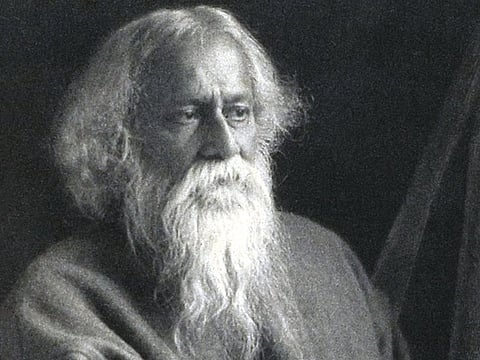Moti Shahi Mahal in Ahmedabad: The birthplace of Tagore's early stories and poems
Back in 1878, when Rabindranath Tagore was a bright-eyed 17-year-old, he found himself dwelling within the historic walls of Moti Shahi Mahal in Ahmedabad. The allure of this magnificent palace and city, nestled alongside the serene Sabarmati river, stirred something deep within him, and it was here that the seeds of his extraordinary literary journey began to bloom.
Tagore's artistic awakening
Rabindranath Tagore, the Nobel laureate and a maestro of arts and philosophy, had a deep admiration for Ahmedabad. Prior to embarking on his overseas studies, he was invited to stay here with his elder brother, Satyendranath who was posted as the district judge.
The city's timeless beauty and rich heritage cast an enchanting spell on his artistic soul, and the historic Mahal became his haven, where the pen met the paper to create wonders that would capture hearts across the nation.
Ahmedabad's Mughal-era marvels and the enchanting pols left Tagore spellbound, sparking his imagination to life. In his own words from 'My Reminiscences,' he shared, "My fancy, free to wander, conjured up pictures of the history of Ahmedabad in the Mughal period. The judge's quarters were in Shahibag, the former palace grounds of the Muslim kings. The vast house seemed one cavernous emptiness, and I wandered all day like one possessed."
In the serene embrace of this historical setting, Tagore would spend countless hours gazing at the flowing river and the grand palaces. His heart, ever attuned to culture, history, and literature, found poetry in the very streets of the city. It was amidst these ancient walls that he wove his short story, "Hungry Stones" (Bengali: Kshudhita Pashan or Khudito Pashan), alongside a collection of heartfelt poems. In his tale, the Sabarmati River itself metamorphosed in the form of the "Shusta River," painting vivid imagery of Mughal grandeur.
Tagore's musical odyssey
Ahmedabad's magnetic charm also kindled Tagore's musical spirit, eventually giving birth to the soul-stirring Rabindra Sangeet. With the Sabarmati river as his muse, he crafted his debut poem, 'Boli O Amar Golap Bala' (I say, O my girl of roses), while basking in the rooftop glow of the Mahal.
In his autobiography, Tagore's emotions overflow as he writes, "We are Calcutta people, and history nowhere gives us any evidence of its past grandeur there. In Ahmedabad, I felt for the first time that history has paused and was standing with her face turned towards the aristocratic past."
The legacy of Tagore's creative genesis within the splendid confines of Moti Shahi Mahal stands as a testament to the eternal connection between art and inspiration, forever etched in the heart of Ahmedabad's enchanting history.
The palace now serves as Sardar Vallabhbhai Patel National Memorial
Built between 1618 and 1622 by the Mughal emperor Shahjahan, the Moti Shahi Mahal continues to stand as a testament to the glorious era of the past. Today, it serves as the revered host to the Sardar Vallabhbhai Patel National Memorial, a museum and exhibition center dedicated to the great Vallabhbhai Patel.
To get all the latest content, download our mobile application. Available for both iOS & Android devices.

